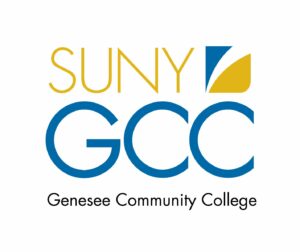 Genesee Community College offers various microcredentials in fields such as business and healthcare. These credentials are supported by the institution’s governance structures and technology systems, ensuring that learners receive a consistent experience. GCC has created a collaborative multi-stakeholder culture, with clear policies and business processes for making technology changes. GCC’s staff customize existing technologies, workflows, and reports to support its microcredential offerings.
Genesee Community College offers various microcredentials in fields such as business and healthcare. These credentials are supported by the institution’s governance structures and technology systems, ensuring that learners receive a consistent experience. GCC has created a collaborative multi-stakeholder culture, with clear policies and business processes for making technology changes. GCC’s staff customize existing technologies, workflows, and reports to support its microcredential offerings.
Credentials Offered
- Credit-bearing associate degrees, certificates, and microcredentials that stack into existing offerings. Some microcredentials have been in place for many years, specifically in business-related areas such as supply chain management.
- Microcredentials are created by faculty using blocks of academic courses that are required for demonstrating specific skills. The approval process for microcredentials follows existing shared governance structures.
Technology Stack
- External webpage: The GCC webpage is built on WordPress and pulls information from Banner to display the correct content.
- Curriculum development and approvals: Staff created a custom form-based workflow for curriculum development and approvals, which integrates with Banner. To add microcredentials, a new custom form was created that included specific data elements required for microcredentials.
- Student Information System: Banner is used as the SIS, and microcredentials are integrated into the existing system.
- Admissions: Microcredentials are identified as program offerings and are displayed as “mini-catalogs” in self-service Banner. The available classes for each semester are also displayed.
- Registration and progress tracking: DegreeWorks is used for registration and progress tracking, giving learners visibility into their progress over time. The consistency of the user experience across all credential offerings was a driving factor in developing integrated curriculum workflows with Banner.
- Transcripts: Banner is used for official and unofficial transcripts. Microcredentials appear on transcripts, providing a record of completion and achievement. Microcredentials are not issued as paper-based awards.
- Digital credentials: Merit pages are used to issue microcredential digital badges. The marketing department manages these digital credentials.
Key Tactics
- Policy definition: Developed a local campus procedure that defines microcredentials and provides guidance for their creation, as well as acknowledging current SUNY definitions, guidance, and reporting requirements.
- Student Information System: Configured microcredentials as a modification to Banner’s tracking of non-matriculated learners. Added a new degree type of “microcredential” to Banner and created major/program codes to differentiate from registered programs. Introduced an additional layer to include an “awardable credential,” instead of just a “non-matriculated enrollment”.Configured microcredentials as a modification to Banner’s tracking of non-matriculated learners. Added a new degree type of “microcredential” to Banner and created major/program codes to differentiate from registered programs. Introduced an additional layer to include an “awardable credential” instead of just a “non-matriculated enrollment.”
- Public websites: Integrated microcredential content from Banner with the marketing department’s tools to display relevant information on public websites. The college’s Computer Services Team manages the website content using the WordPress tool with a MySQL backend.
- Learner progress: Enabled tracking of learner progress toward microcredentials using Degree Works. Learners can view their credential, application, and register for classes using “mini catalogs” in self-service Banner.
- Awarding: Microcredentials appear as awarded credentials on the official transcript, but are not issued as paper-based documents. Microcredentials are issued as digital credentials using Merit pages, which are also used to list academic honors and can be shared via social media. Staff also created an automated scan of Banner to identify learners who have completed microcredential requirements but are not enrolled. This allows staff to regularly contact these learners to award earned microcredentials.
- Reporting: Staff tested the system to ensure microcredentials were properly included or excluded from multiple internal and external reports as needed, including reports on enrollments and graduation rates. Initially, microcredentials were configured not to appear on any reports except those related to non-matriculated majors. Report testing was facilitated via a partnership with SUNY’s Student Information and Campus Administrative Systems (SICAS) Center.
External Initiatives
- Collaborated with the SICAS Center to test data to ensure any Banner modifications for microcredentials did not affect SUNY-wide system reporting. Double-checked their work with the system office.
Lessons Learned
- On microcredential data management: “We integrated it fully with our student information systems that we already have in place. So there really was no separate tool, because it was really something that fit seamless with how we were doing business.”
- On change management: “Once everyone is committed to it philosophically, barriers can be overcome. Engage all stakeholders. Important to test data for reporting on enrollment and completions.”
- On designing technical architecture: “When institutions are looking to embrace microcredentials, the approach we took was to look at how credentials already work in our technical systems and view the microcredential as something that could follow a similar pattern.”
More Information
 Genesee Community College offers various microcredentials in fields such as business and healthcare. These credentials are supported by the institution’s governance structures and technology systems, ensuring that learners receive a consistent experience. GCC has created a collaborative multi-stakeholder culture, with clear policies and business processes for making technology changes. GCC’s staff customize existing technologies, workflows, and reports to support its microcredential offerings.
Genesee Community College offers various microcredentials in fields such as business and healthcare. These credentials are supported by the institution’s governance structures and technology systems, ensuring that learners receive a consistent experience. GCC has created a collaborative multi-stakeholder culture, with clear policies and business processes for making technology changes. GCC’s staff customize existing technologies, workflows, and reports to support its microcredential offerings.